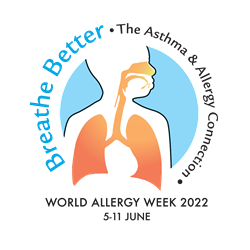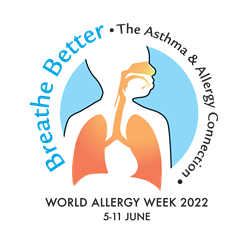
Breathe Better: The Asthma and Allergy Connection
Because allergies and asthma often occur together, and upper airway diseases may worsen asthma, it is essential to diagnose and treat them together
MILWAUKEE (PRWEB)
May 19, 2022
World Allergy Organization (WAO) will host World Allergy Week from June 5 to 11, 2022, to raise awareness about how asthma and allergic airway diseases are connected and how important it is for both physicians and patients to understand and manage both.
Allergic airway diseases of the respiratory system are the most common chronic diseases in humans. These diseases such as asthma, allergic rhinitis, chronic rhinosinusitis, chronic cough, eosinophilic bronchitis, allergic bronchopulmonary mycosis (ABPM), and others often occur together. Asthma affects over 350 million people worldwide, and allergic rhinitis affects between 10% and 50% of the population depending on geographic location. Research indicates that the percentage of asthma cases reported in patients with allergic rhinitis can be up to 38%. The percentage of nasal symptoms present in patients with asthma can be as high as 85%.
The upper airways include the sinuses, nose, mouth, and throat, and the lower airways include the windpipe, bronchial tubes, and lungs. “Airborne allergens such as house dust mites, molds, and pollens, which enter the body through the nose, can trigger inflammation in more than one part of the airways,” according to Motohiro Ebisawa, MD, PhD, Sagamihara National Hospital, Sagamihara, Japan, who is President of WAO. “If a person is sensitized to these triggers, they can experience an allergic reaction with symptoms such as breathing difficulty, wheezing, coughing, and phlegm.”
Physicians can identify allergic airway diseases when detecting these symptoms during patient examinations and using diagnostic tests. “Because allergies and asthma often occur together, and upper airway diseases may worsen asthma, it is essential to diagnose and treat them together,” according to Yoon-Seok Chang, MD, PhD, of Seoul National University Bundang Hospital, Korea, who is Chair of World Allergy Week 2022. “Fortunately, in many parts of the world, allergists have therapeutic options to help patients manage their asthma and allergies, but it starts with understanding how asthma and airway allergies are connected. Then, with awareness and avoidance of triggers when possible, and with effective therapies, patients can improve their quality of life and breathe better.”
International allergy experts will present a two hour-webinar hosted by WAO on June 9, 2022, at 8:00 a.m. EDT (New York) with a live question-and-answer session. Click here to search for your local time: https://www.timeanddate.com/worldclock/converter-classic.html. Find details about the WAO webinar as well as other resources at: http://www.worldallergyweek.org.
To find a professional allergy/immunology member society of WAO in your country or region, visit http://www.worldallergy.org/about-wao/member-societies.
References:
Brożek J et al, Allergic Rhinitis and its Impact on Asthma (ARIA) guidelines – 2016 revision, Journal of Allergy and Clinical Immunology 2017, Vol 140, Issue 4, pp 950-058.
EAACI Global Atlas of Asthma 2021 update, European Academy of Allergy Asthma and Clinical Immunology
Nunes C et al, “Asthma costs and social impact”, Asthma Research and Practice 2017, Vol 3, Article 1.
WAO White Book on Allergy, Update 2013, World Allergy Organization
__________
About the World Allergy Organization
The World Allergy Organization (WAO) is an international alliance of 108 regional and national allergy, asthma and immunology societies. Through collaboration with its Member Societies WAO provides a wide range of educational and outreach programs, symposia, and lectureships to allergists/immunologists around the world and conducts initiatives related to clinical practice, service provision, and training in order to understand and address the challenges facing allergists/immunologists worldwide. (http://www.worldallergy.org)
Share article on social media or email:

